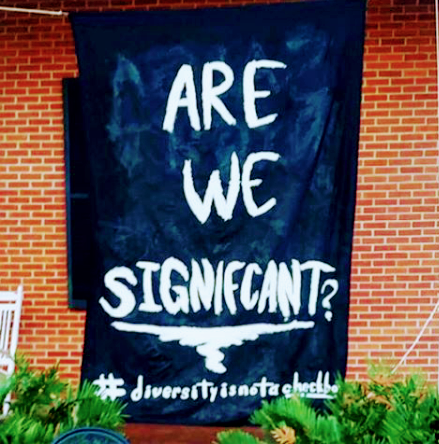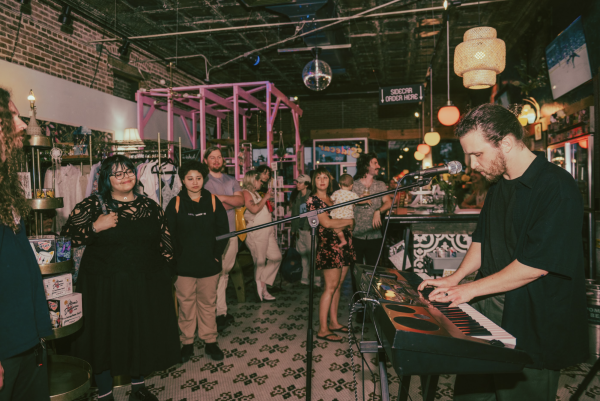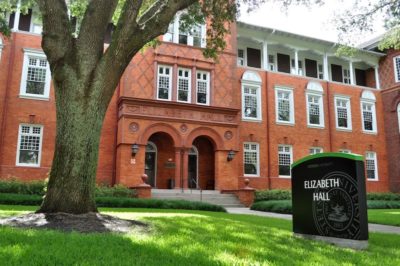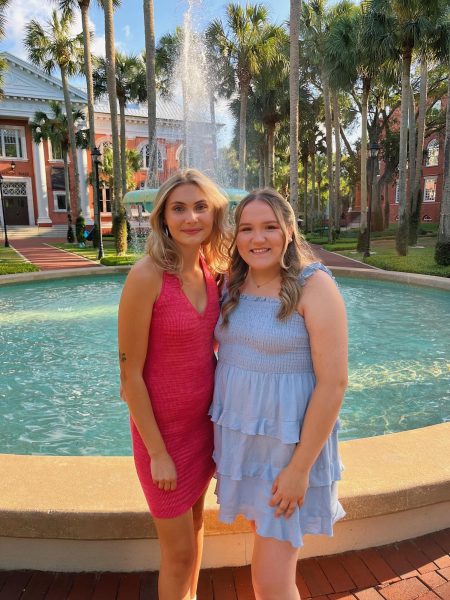“Diversity Is Not a Check Box”
Concerned students call on Stetson to uphold its promises of inclusivity.
In front of the Carlton Union Building, a banner hung that asked the question, “Are we signifcant?” during the first week of February. The word “significant” was misspelled, missing an “I,” and the hashtag #diversityisnotacheckbox ran along the banner’s edge.
This banner called into question the nature of two central Stetson cornerstones: the university’s true intentions about promoting diversity, and the integrity of Stetson’s oft-used slogan “dare to be significant”.
“’Significance’ was something that was never spelled out correctly to us,” said Ashley Sullivan, recent 2016 graduate with a bachelor’s in psychology and one of the creators of the banner.
With lists of grievances, a group of students drafted and personally delivered letters to members of upper-level administration—including university president, Wendy Libby, PhD.
The letter, which can be accessed in full by emailing [email protected], concluded with the following statement:
Diversity is not a checkbox, and the campus of Stetson University should feel like an open space to every student who attends the institution. We call for a campus that is truly one of diverse and inclusive excellence; it is more than a tag line—it is a goal for all of us to attain.

>Several student leaders, from multiple sectors of campus, have attempted to address these issues in the past. However, these leaders feel that their efforts did not have a powerful impact.
Luis Melecio-Zambrano, President of Unidos, the Latin American student organization at Stetson, recognized a common thread of concerns among students, proposing that efforts to improve diversity would be more effective through unity.
When asked what necessitated this action, Melecio-Zambrano cited concerns about the United States’ current political changes. “I want there to be systems in place [at Stetson] in case those federal systems are compromised. I want there to be something on this level that says, ‘they may not have your back, but we will.’”
At the institutional level, group members also cited a lack of stability within areas of diversity and inclusion. “You’re constantly having to build or restructure,” said Sharde Slaw, senior political science major and Vice President of College Democrats. “It’s a disservice to not only the people working closely in that area, but the programs and education that come out of the system.”
“We’re a group of students looking to work with administration,” said Alex Sullivan, a senior majoring in religious studies and anthropology while serving as the President of Stetson’s Organization for Native American Revitalization (SONAR). “The people that we wanted to see the letter were the people we felt had the most decision-making power. We are not trying to be something that exists separate from them.”
Melecio-Zambrano and Sullivan met with President Libby a week after she received her letter about those cited grievances and the way she and university have already begun efforts to address some of those issues, such as adequately communicating resources.
Before this meeting, President Libby had already emailed all Stetson community members, outlining eighteen action initiatives from the Diversity and Inclusion task force and a comprehensive contact sheet of the administrative and staff contacts involved in those initiatives.
The group considered her actions proactive and believed that her education is powerful and her ally-ship is sincere.
Prior to that campus-wide email, Vice Provost Lua Hancock, Ed.D, spoke at the Student Government Association (SGA)’s open senate meeting on the current progress being made to better actualize diversity and inclusivity.
These students, along with fellow peers, attended the senate meeting in an effort to publicly display their collective concern.
“Visually, it feels empowering,” said Salma Belakbir, senior English major and Cross Cultural Center Interfaith intern. “It’s not just me that has these issues—it’s all these people and more.” However, Belakbir points out that being “aware” of these resources isn’t enough. “We’re all very involved students, but at the end of the day you have to go through so many people and links in order to arrive at the end point,” said Belakbir. “When you arrive at these resources, they don’t feel authentic—and it feels placating.”
The group made clear that they do not feel entitled to every degree of institutional information, but do wish to be involved in processes that will directly impact students.
“We don’t have to be the ones to make the ultimate decision, but it’s nice to have our voices heard in the decision making process—because we’re told that we’re leaders and that our voices and opinions matter,” said Sullivan.
“There’s a lot of decisions that have a direct consequence on the students’ education,” said Belakbir. “I am passionate about making the experience of Stetson students, especially for marginalized students, the best that it can be by making sure that the school lives up to its advertising.”
Coming together over various interests, from advocating for indigenous people’s rights, to debunking Asian cultural stereotypes, to finding what it means to be Latino/a, to LGBTQ+ rights and other social justice issues—this group of concerned Stetson students wants the university to realize the potential outlined in Sue Rankin’s executive summary of the campus climate survey (which was conducted almost a full semester ago):
Stetson DeLand, with the support from senior administrators and the collaborative leadership, is in prime position to actualize its commitment to an inclusive campus and to institute organizational structures that respond to the needs of its dynamic campus community.







